The Legend of Zelda: The Minish Cap (Game Boy Advance) Second Opinion Review
By Renan Fontes  19.05.2016
19.05.2016

Many a Zelda game has set out to be an origin story of sorts for the saga. A Link to the Past gave concrete background and lore to the Triforce; Ocarina of Time gave context to Link, Zelda, and Ganon's many appearances; and Skyward Sword came around and gave a definite starting point to the whole franchise. Before Skyward Sword, however, there was one other beginning: The Minish Cap.
Nintendo has a habit of incorporating Ganon into Legend of Zelda titles that already have antagonists. The previous Capcom-developed games, Oracle of Ages and Oracle of Seasons, had their own unique villains with stories that were hijacked by the blue beast at the last minute. While adding Ganon didn't hurt them, it didn't help, either, and one of The Legend of Zelda: The Minish Cap's greatest strengths is its full commitment to its central antagonist: Vaati.
Vaati was first introduced in the short multiplayer 2002 side game, Four Swords, which came packaged with A Link to the Past's Game Boy Advance port. Under-designed and underwritten, Vaati was as unmemorable as a Zelda villain could be. He had no discernible arc and simply existed to give Ganon a break from fighting Link. In a stroke of genius, The Minish Cap chose to take this relatively unknown antagonist and go back to a point in the timeline before Ganon was a threat.
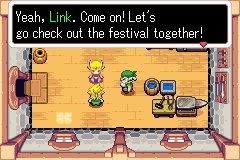
Lifting aspects from previous entries in the series is a common thread in The Minish Cap, particularly in the game and level design. Developed by the same team that was behind the Oracle duology, it feels like a logical progression of the team's design choices.
While this features a significantly lower amount of dungeons than either Oracle game and one of the lowest counts in the series as a whole, each dungeon is very carefully and cleverly crafted, blending the puzzles from Ages and the combat from Seasons seamlessly together. There's a Majora's Mask style of approach to the dungeons, as well, where, while there aren't very many, each one has its own specific theme and dynamic approach to reaching the boss.
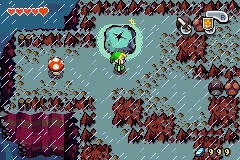
Combat itself is reminiscent to The Wind Waker, with Link having the opportunity to learn several sword techniques throughout his journey, adding a layer of depth to the combat that wasn't present in previous 2D entries.
The art style is also heavily lifted from the cel-shaded GameCube game, utilising bright colours and expressive movement to convey emotion and define setting. This style, transplanted into 2D, arguably looks more natural than The Wind Waker's 3D approach, making way for a Hyrule that looks like a land straight out of a fairy tale.
With great combat, great character, and a vibrant world, The Minish Cap is already an excellent Zelda game, but it truly shines in its side content. It is loaded to the rim with optional side quests and collectibles and, in many respects, is the perfect balance of genuine exploration and story-driven narrative.
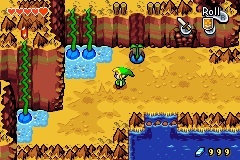
While NPCs aren't as lively as in Majora's Mask, each one has their own set personality channelled through the kinstone feature, a method of developing minor characters and rewarding Link with heart pieces and rupees throughout his quest. There's also figurine collecting, which is highly reminiscent of The Wind Waker's pictograph side quest. Topped off with an optional quest line to develop Link's swordplay and the massive amount of heart pieces to collect, The Minish Cap stands as one of the best examples of balance in the series.
Despite all of the lifting from other titles, The Minish Cap impressively never loses its own identity. Every borrowed element is expanded upon and infused with its own distinct charm that separates it from the rest of the series. This isn't just a progression of the Oracle series in the 2D instalments; it's a natural progression of the entire franchise as a whole.
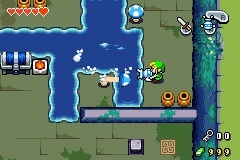
Cubed3 Rating
Exceptional - Gold Award
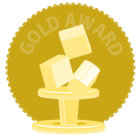
The Legend of Zelda: The Minish Cap simultaneously manages to feel like a breath of fresh air for the series and a collaboration of the best aspects of previous entries. It transitions The Wind Waker's art style from 3D to 2D seamlessly, all while managing to maintain its own identity; the kinstones encourage interactions with NPCs in the same vein as Majora's Mask; and the design and gameplay are deeply rooted in the Oracle duology. Topped off with a surprisingly strong story with tight character arcs, The Legend of Zelda: The Minish Cap stands tall as one of the greatest games on the Game Boy Advance and in the franchise as a whole.
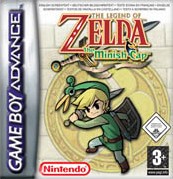
![]() 9/10
9/10
![]() 9/10
(59 Votes)
9/10
(59 Votes)
 Out now
Out now  Out now
Out now  Out now
Out now  Out now
Out now Comments
Comments are currently disabled

 Sign In
Sign In Game Details
Game Details Subscribe to this topic
Subscribe to this topic Features
Features





 Top
Top

